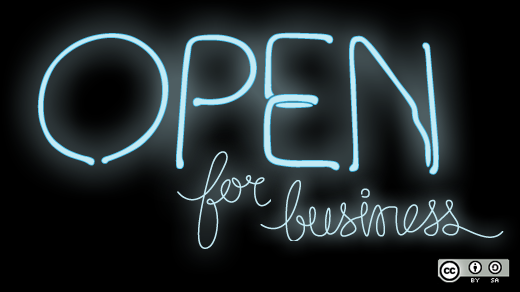The year 2014 will be marked as one where open source changed for me. It didn't change overnight or even very rapidly, but in July I noticed that the open source of today was not what I imagined it would be.
And this can be a good thing.
When I starting working full time with open source, back in 2001, the idea was to build a lot of free software. It reminded me of when I got my first computer back in 1978 (a TRS-80) and the environment encouraged a lot of code sharing. In those days, it was easy to differentiate open source from commercial software, and the thought was to replace the expensive walled gardens of proprietary code with better, freer, alternatives. But from a business perspective we were still in search of a business model.
Then came the dark ages, when in the business environment "open source" became synonymous with "open core" (or, as I prefer, fauxpensource). This was the business model where part of the code was published under an open source license, but if you wanted full featured software, you had to pay and use it under a closed license. Ultimately, the market rejected that model, lead by people like Brian Prentice at Gartner who called it "The Emperor's New Clothes."
But sometime during the first part of this decade, things started to change. Driven in part by the proliferation of high speed network access, hosted applications started gaining ground. Large companies not normally associated with open source became its biggest proponents. Instead of just using open source, they started to actively contribute to it.
Open source can be difficult to use, mainly because there is little business reason to make it easy. Even in my own business, people pay us to make our product more powerful versus easier to use. In a lot of open source projects, the developers get to a minimally viable product and then stop. It meets their needs and there is no business reason to really proceed beyond that.
But with hosted applications (call it SaaS, call it "the cloud") there is money to be made in making open source applications, or applications built on open source, easily accessible to the non-technical. Take Wordpress for example. I love Wordpress. It is easy to use and to set up, yet they are able to make more than $45 million USD per year (the latest numbers I could find were from 2012). They provide a service people like, which generates revenue, and that revenue goes, in large part, toward making the application easier to use.
So, I had kind of an epiphany at OSCON this year. The companies with the biggest booths were HP, Paypal, Citrix, Google, and Rackspace. The PayPal mantra was "using open source foundations in our technology stacks." Hosting provider Bluehost touted it is "built on open source technologies."
Now, not all of these companies are as transparent as Wordpress, but they create a lot of open code. Better yet, they hire and train lots of people to work in open source. So while the business model is a far cry from creating free applications, they have exponentially increased the amount of people involved in open source projects. While a lot of that work focuses on libraries, tools, and languages, these people, in turn, decide to contribute to other open source projects, including open applications.
Several years ago, I traded in my MacBook and iPhone for a Linux Desktop and an Android phone. Every year my options have just gotten better and better, and it is to the point where I feel constricted when I have to use anything else. This is possible due to the high quality of open source software now available, and a lot of that can trace its origins to companies and business models that have nothing in common with the open source of ten years ago.
If I am to take away anything from 2014, it's that open source is now mainstream and here to stay. And this is a good thing.






1 Comment